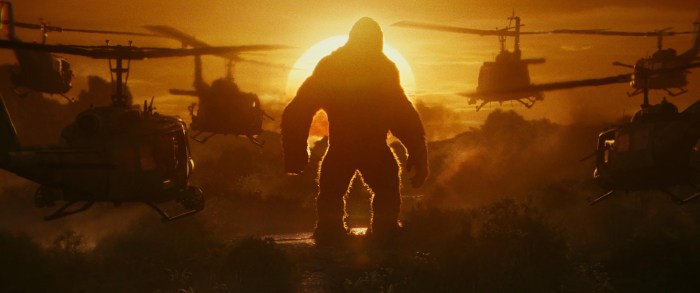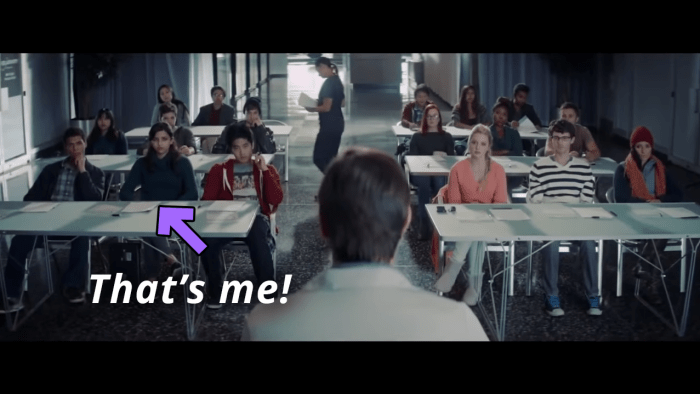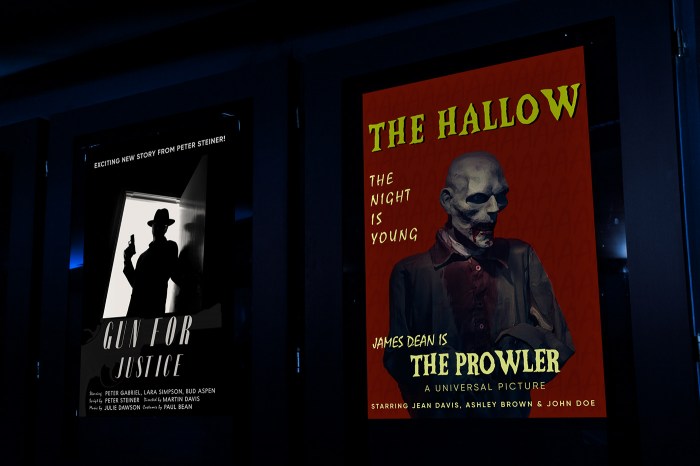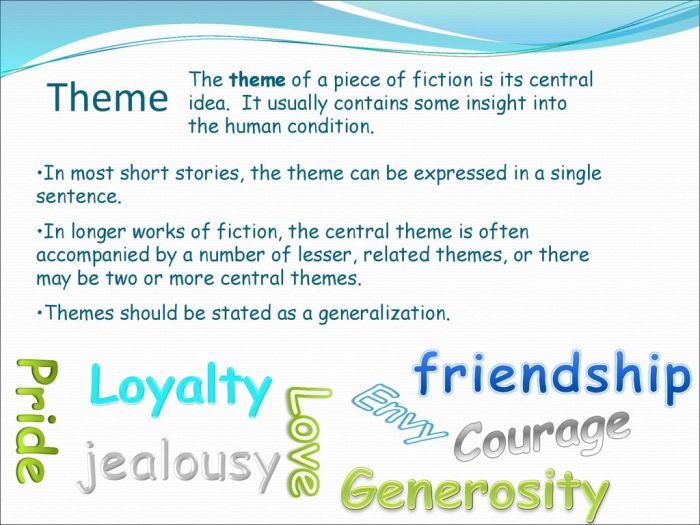First look new Kong Skull Island posters are here, and they’re absolutely stunning! These new visuals offer a tantalizing glimpse into the upcoming film, promising a visually arresting experience. From the bold color palettes to the evocative imagery, the posters hint at a thrilling journey through the exotic island setting. We’ll delve into the design elements, narrative themes, and comparisons to previous Kong films to get a better sense of what to expect.
The posters showcase a masterful blend of artistic style and storytelling. They’re not just pretty pictures; they’re meticulously crafted to evoke specific emotions and build anticipation for the movie. We’ll analyze the key design elements, such as color palettes, fonts, and imagery, to understand how they contribute to the overall impact and marketing strategy.
Poster Design Elements
The recently released Kong Skull Island posters offer a captivating visual feast, promising a thrilling cinematic experience. The designers have skillfully employed a variety of techniques to create a powerful impact, building anticipation for the film. These posters, with their striking visuals and deliberate design choices, serve as powerful marketing tools.
Color Palettes and Imagery
The posters utilize a dynamic color palette that evokes both the primal beauty and the looming threat of Skull Island. Dark, earthy tones like deep greens, browns, and muted grays dominate, creating a sense of mystery and wilderness. These colors are punctuated by flashes of vibrant, almost unnatural blues and oranges, highlighting key elements and characters, while also hinting at the island’s exotic and dangerous nature.
The imagery prominently features Kong, often in dynamic poses, suggesting his raw power and immense size. Supporting imagery includes glimpses of the lush, prehistoric jungle, highlighting the island’s untamed beauty and the danger lurking within. The posters also feature hints of the human characters, suggesting their vulnerability amidst the towering presence of the monstrous ape.
Artistic Style and Techniques
The posters employ a cinematic, almost painterly style, using techniques that draw the viewer in. The use of strong shadows and high contrast enhances the sense of depth and drama. A slightly stylized approach to the imagery adds to the film’s visual flair. The artistic choices suggest a blend of realism and heightened drama, fitting the tone of a monster-action adventure.
The posters’ style effectively foreshadows the film’s visual aesthetic, creating an immersive experience for the viewer before even stepping into the theater.
Typography and Visual Hierarchy, First look new kong skull island posters
The typography plays a significant role in establishing the posters’ visual hierarchy. Strong, bold fonts are used for the film title and key characters’ names, drawing attention to these crucial elements. Subtle, yet legible fonts are employed for supporting text, ensuring the focus remains on the main visual components. The typeface selection and placement are crucial in guiding the viewer’s eye and emphasizing the core messages of the poster.
Compositional Elements
The posters skillfully utilize compositional elements to enhance their impact. The rule of thirds is often employed, positioning key elements, such as Kong, off-center to create a more dynamic and engaging composition. The use of negative space is also evident, allowing the powerful imagery of Kong and the island to take center stage. This deliberate avoidance of clutter focuses the viewer’s attention on the core elements, enhancing the overall visual experience.
Poster Element Analysis
| Element | Description | Impact |
|---|---|---|
| Color Palette | Dark earthy tones with pops of vibrant color. | Creates a sense of mystery, danger, and exotic beauty. |
| Imagery | Kong in dynamic poses, lush jungle, hints of human characters. | Highlights the film’s key elements, creates visual intrigue, and establishes a sense of scale and threat. |
| Artistic Style | Cinematic, painterly, strong shadows and high contrast. | Enhances the sense of drama and depth, hinting at the film’s visual style. |
| Typography | Bold fonts for titles, subtle fonts for supporting text. | Establishes visual hierarchy, guides the viewer’s eye, and emphasizes key information. |
| Composition | Rule of thirds, strategic use of negative space. | Creates dynamic compositions, focuses attention on key elements, and enhances visual appeal. |
Narrative and Thematic Content

The recently released posters for Kong: Skull Island offer tantalizing glimpses into the film’s narrative and themes. Beyond the visual spectacle, these images subtly convey the core conflicts and emotional landscape of the story, hinting at the dangers and mysteries that await. They invite viewers to ponder the film’s central messages about humanity’s place in a larger, more formidable world.These posters, while seemingly disparate, form a cohesive visual narrative.
They collectively build a sense of impending peril and awe, emphasizing the epic scale of the adventure and the powerful forces at play. The choice of imagery, composition, and color palette is carefully curated to evoke a particular emotional response in the audience, setting the stage for an unforgettable cinematic experience.
Just saw the first look at the new Kong Skull Island posters, and wow, they’re seriously intense! The visuals are definitely amping up the anticipation for the movie. It got me thinking about the terrifying real world cults that inspired Far Cry 5, which are fascinating and chilling to explore. This article dives deep into the disturbing details, and it makes you appreciate the level of detail that goes into crafting these cinematic experiences.
Ultimately, these posters promise a thrilling ride, echoing the same sense of unease and dread that these real-world cults inspire.
Key Themes and Messages
The posters effectively communicate several key themes, hinting at the film’s exploration of humanity’s relationship with nature, the dangers of unchecked ambition, and the power of resilience. These themes are woven throughout the imagery, creating a cohesive and compelling visual language.
- The Power of Nature: The posters showcase the overwhelming scale and raw power of the island’s environment. Images of towering, prehistoric creatures and dense, impenetrable jungle landscapes convey the formidable force of nature. This theme underscores the idea that nature’s forces are often beyond human comprehension and control.
- Human Vulnerability: Many posters feature human characters caught amidst the backdrop of the colossal creatures and threatening environment. This imagery emphasizes the fragility of human life in the face of the immense power of nature. The postures of the characters often convey a sense of vulnerability and struggle, further highlighting the theme.
- The Unknown: The posters are filled with a sense of mystery and the unknown. The shadowy figures and unseen creatures hint at the dangers and mysteries lurking within the island’s depths. This thematic element emphasizes the idea that the world holds many secrets yet to be discovered, and that danger often lies in the unexplored.
Narrative Hints in the Posters
The posters don’t explicitly reveal the plot but rather provide tantalizing hints at the narrative unfolding within the film.
- Exploration and Discovery: The posters depict the characters venturing into the island’s interior. This imagery suggests an exploration of a new world, a journey into the unknown. The explorers’ expressions and postures often suggest a mix of excitement and apprehension.
- Conflict and Confrontation: The presence of towering creatures and ominous imagery suggests conflicts between humans and these primal forces. This element alludes to the struggles and confrontations that will define the story. The poses and expressions of characters in the posters imply potential confrontations and the struggles they will face.
- Survival: The posters highlight the challenging environment, suggesting a struggle for survival. The imagery emphasizes the precariousness of the characters’ situation, showcasing the obstacles and hardships they will face. This theme ties directly to the emotional tone.
Emotional Tone and Atmosphere
The posters evoke a specific emotional tone and atmosphere, which is crucial in setting the stage for the film’s narrative.
- Awe and Fear: The juxtaposition of majestic creatures and human figures creates a sense of awe and fear. The posters aim to instill a sense of wonder at the spectacle of nature while simultaneously inducing apprehension regarding the potential dangers.
- Mystery and Intrigue: The posters effectively generate intrigue and mystery. The shadowy figures, dense jungle, and unseen creatures evoke a sense of unease and curiosity. The posters create a compelling atmosphere that draws viewers into the unknown.
- Epic Scale: The overall visual language emphasizes the epic scale of the adventure. The sheer size and power of the creatures and the vastness of the jungle landscape create a sense of grandeur and magnitude. This contributes to the film’s intended epic scope.
Symbolism and Metaphors
Symbolism and metaphors are evident in the posters’ design choices, enhancing their thematic impact.
- Nature as a Threat: The dense jungle and menacing creatures can be interpreted as symbolic representations of nature’s raw power and the dangers that lie within the unexplored. The posters use the jungle and its inhabitants to represent nature as a force that both inspires awe and poses threats.
- Humanity’s Limits: The posters imply that humans are not invincible. The imagery suggests that confronting the power of nature will push human limits, highlighting the themes of vulnerability and resilience. The characters’ postures and expressions within the environment emphasize the limitations of humanity.
- The Unknown as a Source of Danger: The shadowy figures and unseen creatures symbolize the unknown. This element underscores the dangers of the unknown and the potential perils lurking in the unexplored aspects of the island. The use of shadows and hidden figures further emphasizes the theme of the unknown.
Comparison of Poster Themes with Movie Themes
| Poster Theme | Potential Movie Theme |
|---|---|
| Nature’s Power | The inherent dangers and unpredictable forces of nature. |
| Human Vulnerability | The fragility of life and the challenges of survival. |
| The Unknown | The mysteries and secrets of the island and the universe. |
Comparison with Previous Kong Posters
The new “Kong: Skull Island” posters mark a significant evolution in the franchise’s visual language, building upon the established aesthetic while introducing fresh elements. This comparison examines the design elements, identifying key similarities and differences across previous Kong films to understand how the new posters contribute to the overall narrative and thematic development. The evolution of the poster design highlights the shifting focus and tone of the Kong franchise.
The first look new Kong Skull Island posters are seriously awesome. They really capture the primal energy of the film, but I’m also noticing a shift in the genre itself. It’s like country music is changing in spite of itself country music is changing in spite of itself , adapting to new sounds and styles while trying to hold onto its roots.
Either way, the posters are visually striking, and I’m pumped for the movie!
Design Elements Comparison
The poster designs for the Kong franchise have undergone a noticeable evolution, reflecting the changing storytelling and target audience over time. The posters showcase the evolution of the franchise’s visual style, reflecting the distinct themes and tones of each film. The table below details the evolution of the poster design language across Kong films.
| Poster | Key Design Elements | Comparisons |
|---|---|---|
| Kong (1933) | Simple, illustrative style, emphasizing the iconic ape’s size and power, with a sepia-toned palette. | Focuses on primal strength, showcasing Kong as a colossal, almost mythical creature. |
| King Kong (1976) | More stylized, with a blend of realism and fantasy. Includes significant foreground elements. Dramatic lighting. | Emphasizes the grandeur and scale of the film’s narrative. The design reflects the creature feature elements and the action-adventure tone. |
| Kong: Skull Island (2017) | Contemporary aesthetic, with a focus on environmental detail and atmosphere. The palette is more vibrant, showcasing a sense of wonder and danger. | Shifts to a more modern visual style, highlighting the beauty and danger of the island setting. Emphasizes the island’s unique environment and the danger it poses to Kong. |
| New Posters (2023) | Utilizes a hyperrealistic style, focusing on intense, detailed close-ups of Kong. The composition often features the jungle and/or surrounding environment in a more subdued manner, creating a sense of ominousness. The color palette is varied but with a distinct focus on the natural colors of the jungle. | This is a noticeable departure from the previous poster styles. The hyperrealism and close-ups of Kong create a more personal connection, hinting at the emotional journey. The subdued jungle background emphasizes the isolation and danger Kong faces. |
Evolution of Poster Design Language
The shift from the classic, almost illustrative style of the 1933 poster to the hyperrealistic approach of the new posters showcases a significant evolution in the way the Kong franchise presents itself. This evolution is directly tied to the changing filmmaking techniques and the expectations of modern audiences.
Stylistic Shifts and Innovations
The new posters showcase a significant stylistic shift toward hyperrealism and detailed close-ups of Kong. This approach creates a more intimate connection with the character, emphasizing his raw power and vulnerability. The subdued jungle background further enhances the sense of isolation and danger, setting a tone that is more intense and atmospheric than previous iterations. The color palette, while varied, often features the natural colors of the jungle, enhancing the realism and visual impact of the setting.
Similarities and Differences in Overall Aesthetic
While the poster designs have evolved across the films, certain similarities remain. The overarching theme of showcasing Kong’s power and majesty is consistent across all iterations. However, the approach to achieving this effect has changed dramatically. The 1933 poster relied on a more symbolic approach, while modern posters emphasize the creature’s raw power and vulnerability through detailed close-ups and hyperrealism.
The environment and setting play a crucial role, and the posters effectively showcase the danger and wonder of the island setting.
Target Audience and Marketing Strategy: First Look New Kong Skull Island Posters

The marketing strategy behind “Kong: Skull Island” posters hinges on effectively targeting a specific audience and using visually compelling elements to pique their interest. Understanding the intended audience is paramount to the success of the campaign, as it dictates the poster’s design choices. The promotional materials need to resonate with potential viewers, enticing them to see the film and fostering a sense of anticipation and excitement.The poster designs serve as a crucial first impression, influencing initial perceptions of the movie.
The choice of colors, imagery, and overall aesthetic directly contributes to shaping the target audience’s understanding of the film’s themes and tone. The visual language employed in the posters should communicate the movie’s essence effectively, prompting viewers to associate the film with specific values, emotions, and expectations.
The first look at the new Kong Skull Island posters is seriously impressive! It’s got me hyped for the movie. Considering how popular instant messaging apps like WhatsApp are, it’s no surprise that promotional materials like this are shared widely. People use WhatsApp for a variety of reasons, from staying in touch with friends and family to sharing exciting news like these new posters Why Do People Use WhatsApp.
Ultimately, these posters are a great example of how visual marketing can generate buzz.
Target Audience Identification
The primary target audience for “Kong: Skull Island” posters is likely comprised of fans of action and adventure films, monster movies, and those interested in exploring exotic locations. This includes a range of demographics, including young adults and adults, who are attracted to visually stunning and thrilling cinematic experiences. Beyond the core demographic, the marketing team also likely considers broader appeal to moviegoers who enjoy spectacle and visually rich narratives.
Marketing Strategy Behind Poster Designs
The marketing strategy behind the poster designs is multifaceted, focusing on generating buzz and excitement while maintaining a sense of mystery around the film. The posters aim to capture attention with striking visuals, highlighting the film’s action sequences and exotic setting. The aesthetic and tone of the posters will be critical in establishing a visual identity for the film, ensuring consistency across all promotional materials.
Intended Effect of Posters on Target Audience
The intended effect of the posters is to generate anticipation and excitement for the film, prompting viewers to want to see it in theaters. By showcasing compelling imagery and elements of surprise, the posters create a desire for more information and experience the film’s narrative. The design should evoke a sense of adventure and wonder, inspiring viewers to imagine themselves within the movie’s world.
Use of Color Palettes and Imagery
The color palettes and imagery used in the posters play a vital role in attracting the target audience. Dark, moody color palettes can evoke a sense of mystery and danger, especially if paired with imagery of the jungle. Conversely, bright colors or vibrant landscapes can highlight the exotic and awe-inspiring nature of the setting. Specific color choices and visual elements will likely align with the film’s genre, and create a sense of spectacle.
Potential Impact on Movie Ticket Sales
The effectiveness of the posters in driving ticket sales is contingent on their ability to connect with the target audience and create a desire to experience the film. If the posters are visually appealing, generate intrigue, and evoke excitement, they are more likely to increase ticket sales. Previous successful marketing campaigns for similar films, including visual comparisons, can serve as useful benchmarks.
A successful campaign would result in a noticeable increase in pre-release interest and ultimately, box office revenue.
Target Audience & Poster Design Elements & Intended Impact
| Target Audience Segment | Poster Design Elements | Intended Impact |
|---|---|---|
| Action/Adventure Movie Fans | High-octane action sequences, striking visuals, compelling characters | Generate excitement and desire to experience the film’s thrills |
| Fans of Monster Movies | Intriguing imagery of Kong, hints of danger, mysterious creatures | Evoke anticipation for the monster’s presence and role in the story |
| Viewers Seeking Exotic Locations | Visually rich portrayal of Skull Island, showcasing lush jungles and unique landscapes | Create a sense of adventure and curiosity about the film’s setting |
Poster Illustrations/Visuals
The visual elements of a film poster are crucial in capturing the essence of the movie and enticing potential viewers. These posters are often the first impression audiences have of a film, shaping their expectations and creating anticipation. A well-designed poster effectively communicates the tone, genre, and key themes of the movie. The visuals need to resonate with the target audience and align with the overall marketing strategy.
Kong’s Evolution
The visual evolution of Kong across the franchise is a key element to convey to the audience. Posters should visually showcase Kong’s physical growth and development. The first Kong films presented a more primal, raw depiction of the ape. The posters of the new film should depict a Kong that is more mature and imposing, showcasing his increased size and strength.
This visual progression will help solidify the narrative of Kong’s journey. This evolution needs to be subtle yet noticeable, drawing a connection to the past without sacrificing the uniqueness of the current iteration.
Poster Design Concept
A compelling poster design concept can effectively combine elements from previous Kong films with the new film’s unique characteristics. A poster could incorporate a silhouette of Kong against a backdrop of the iconic Skull Island, reminiscent of the first film’s style. This approach would evoke nostalgia and recognition for the franchise while maintaining a contemporary feel. The color palette could be a mix of deep blues and greens, evoking the mysterious nature of the island.
The addition of a stylized text overlay with a modern font style, while retaining a connection to previous movie’s fonts, would effectively communicate the film’s narrative. A striking close-up of Kong’s face, highlighting his powerful features and a sense of determination, would complement the silhouette.
Island Setting
The island setting is fundamental to the movie’s narrative, a mysterious and dangerous location. Visual representations should convey the island’s untamed beauty, showcasing the lush vegetation and the looming presence of towering cliffs and dense forests. The visuals should portray the environment’s primal and unforgiving nature, creating a sense of impending danger and mystery. The use of depth of field could emphasize the vastness of the island and its hidden dangers.
Fog or mist could be incorporated to highlight the island’s secrets and the unknown lurking within.
Key Character Visual
A key character’s visual representation on the poster is essential for attracting viewers and establishing their importance to the story. For instance, a poster could feature a close-up of a key human character’s face, showcasing their determination and resilience amidst the backdrop of Kong’s presence. This visual representation should project the character’s vulnerability and strength in the face of the challenges they will face.
The visual language of this character needs to be consistent with the movie’s themes and tone.
Perspective and Depth
Utilizing perspective and depth in poster illustrations is vital for creating a sense of scale and visual interest. For instance, positioning Kong towering over the human characters would immediately establish his imposing presence and the power imbalance on the island. The use of vanishing points in the background can create an illusion of distance, drawing viewers into the scene and hinting at the vastness of the environment.
Visual layering and varying degrees of light and shadow will help create a sense of depth and dimension, making the poster more engaging and immersive.
Visual Representation Table
| Visual Element | Description |
|---|---|
| Kong’s Evolution | A progression from primal to more mature and imposing, visually demonstrating his physical development. |
| Poster Design Concept | Combines silhouette of Kong against Skull Island backdrop with contemporary elements. |
| Island Setting | Untamed beauty, lush vegetation, towering cliffs, dense forests, emphasizing danger and mystery. |
| Key Character | Close-up of a human character’s face, projecting determination and resilience amidst Kong’s presence. |
| Perspective and Depth | Use of vanishing points, visual layering, and light/shadow to establish scale, distance, and dimension. |
Final Summary
In conclusion, the new Kong Skull Island posters are a strong indicator of what’s to come. The striking visuals, coupled with the thematic elements, create a compelling narrative that promises a thrilling adventure. By comparing these posters to previous Kong films, we can see a clear evolution in the franchise’s design language, hinting at both familiar elements and exciting innovations.
The posters successfully capture the essence of the movie, promising an immersive experience for audiences.










